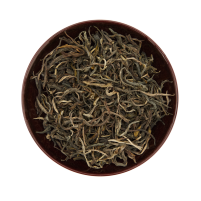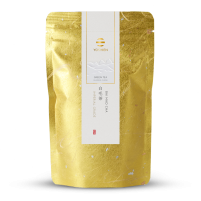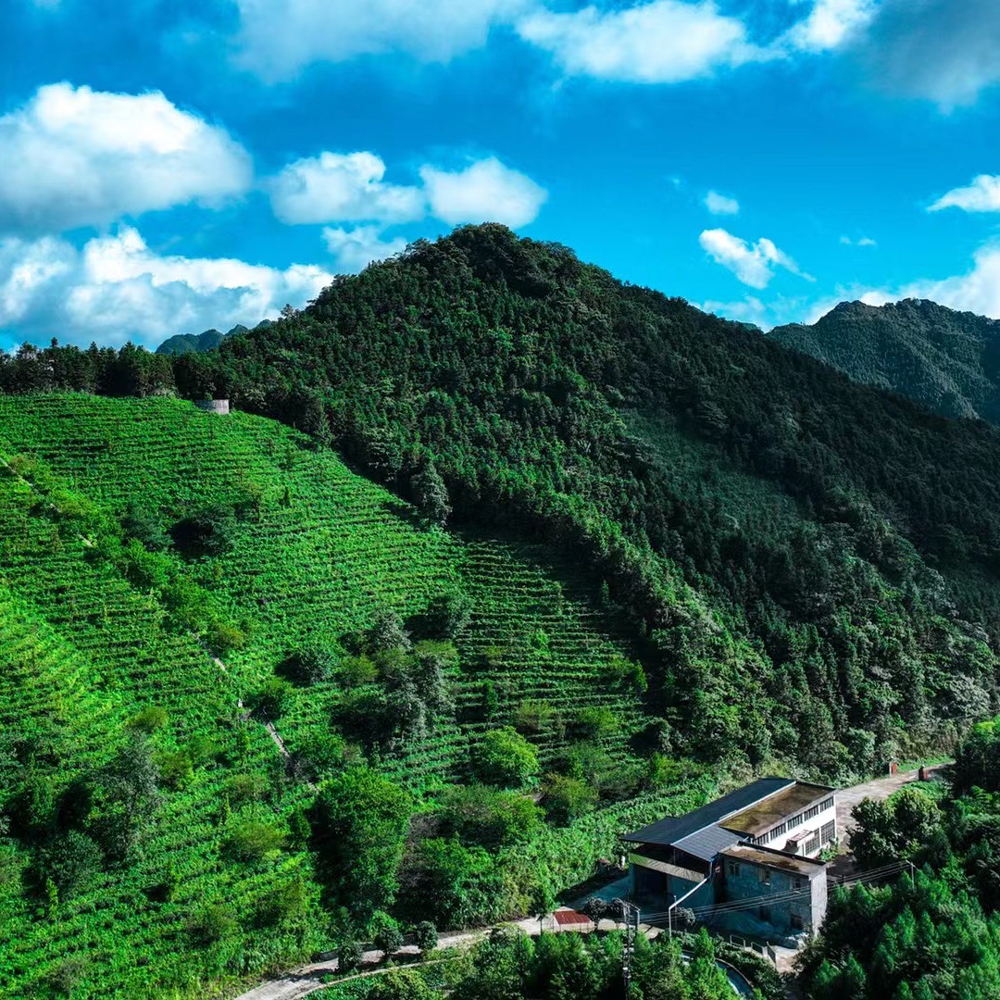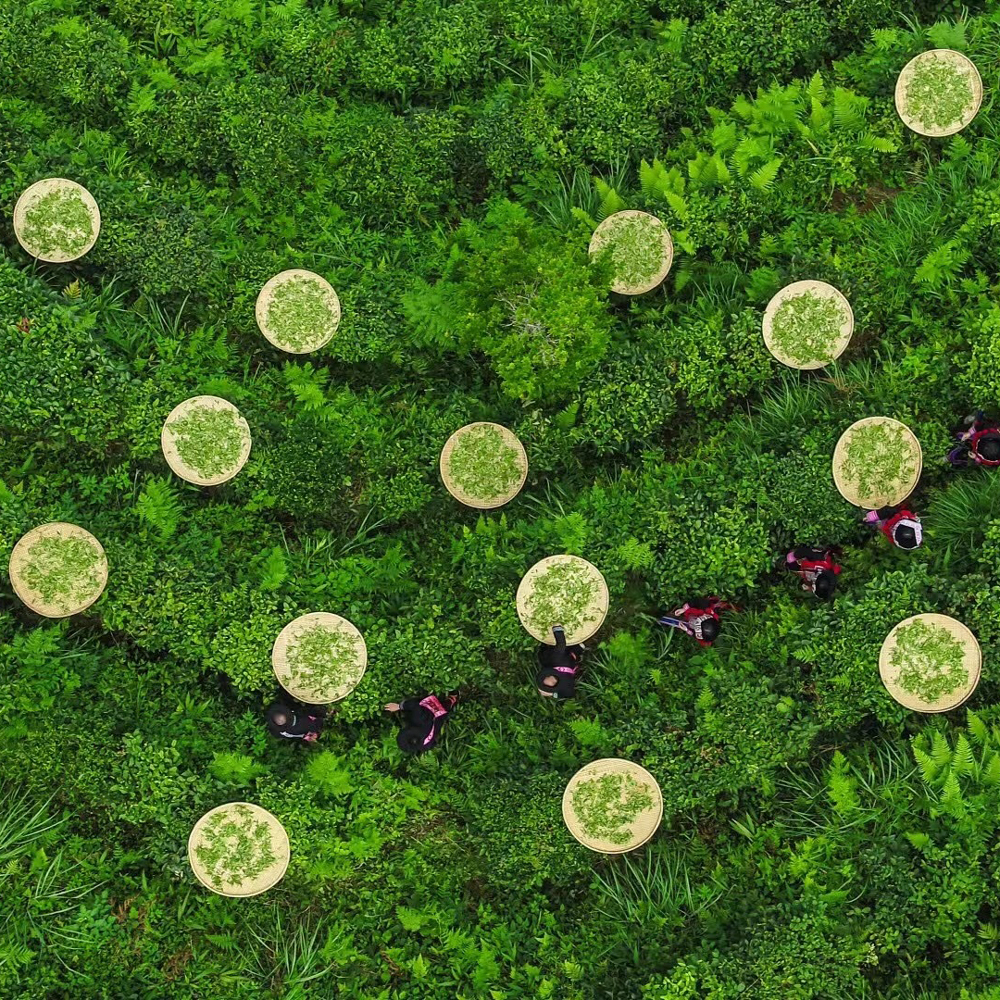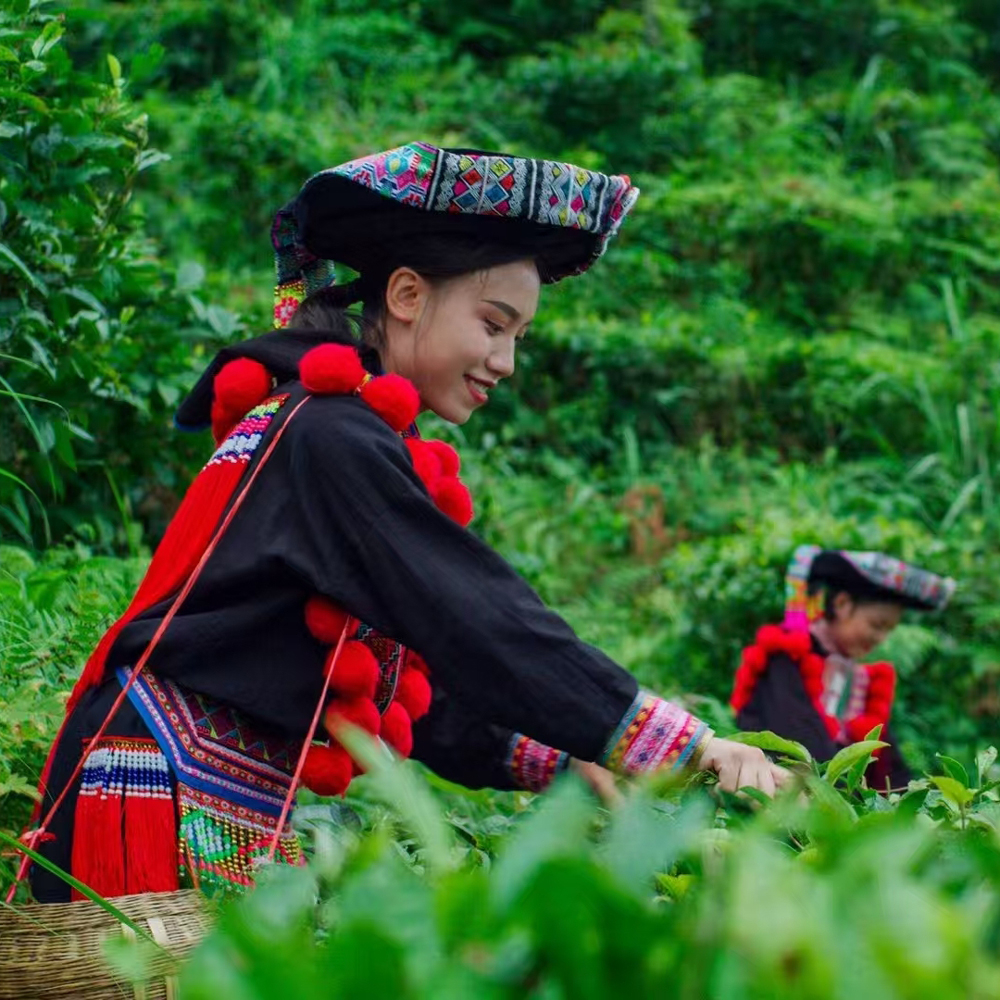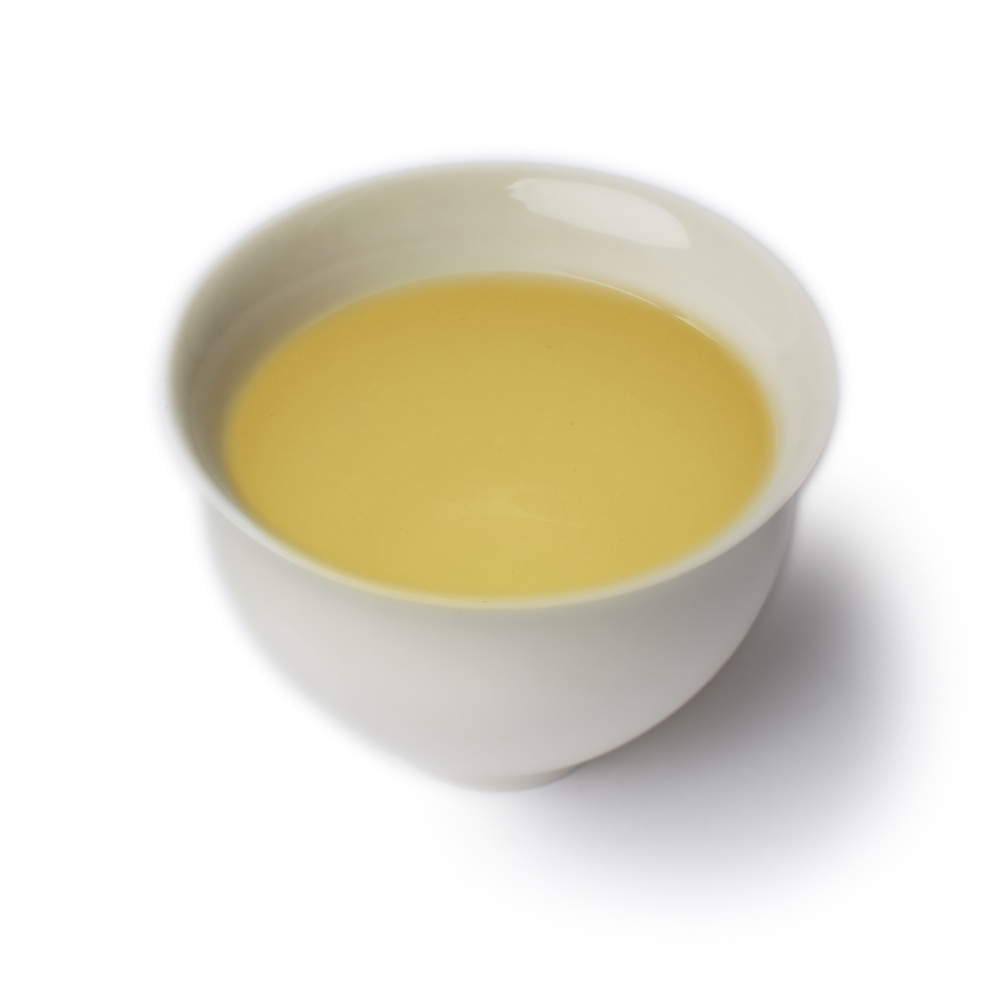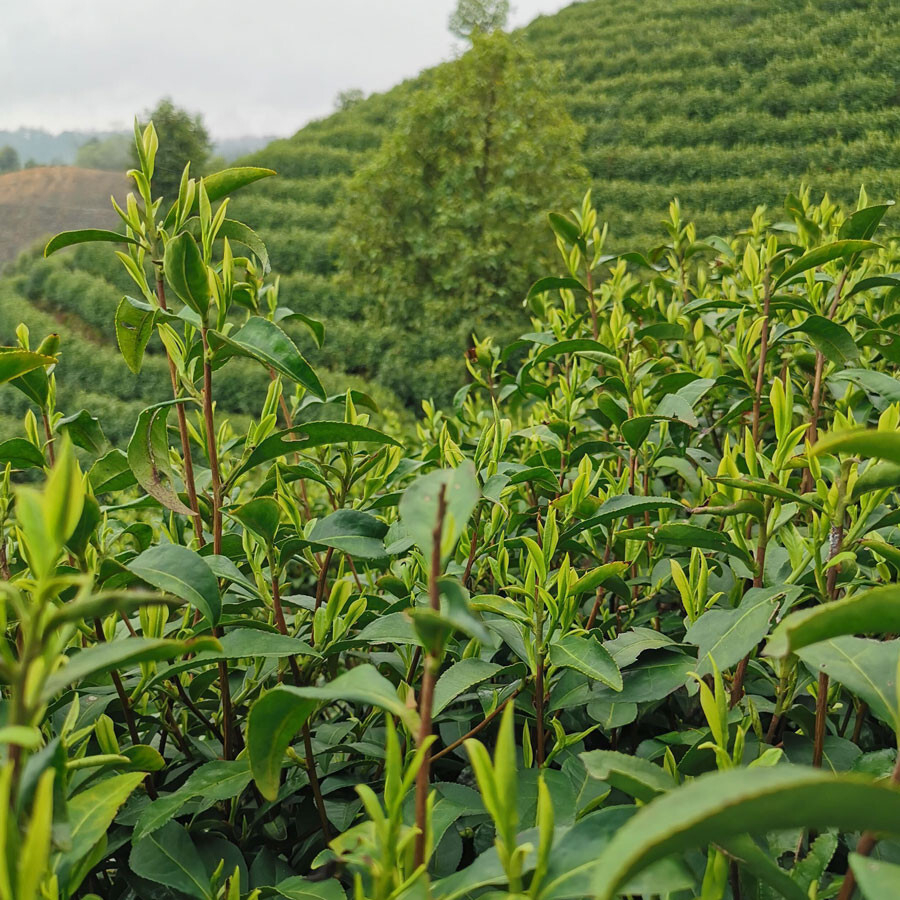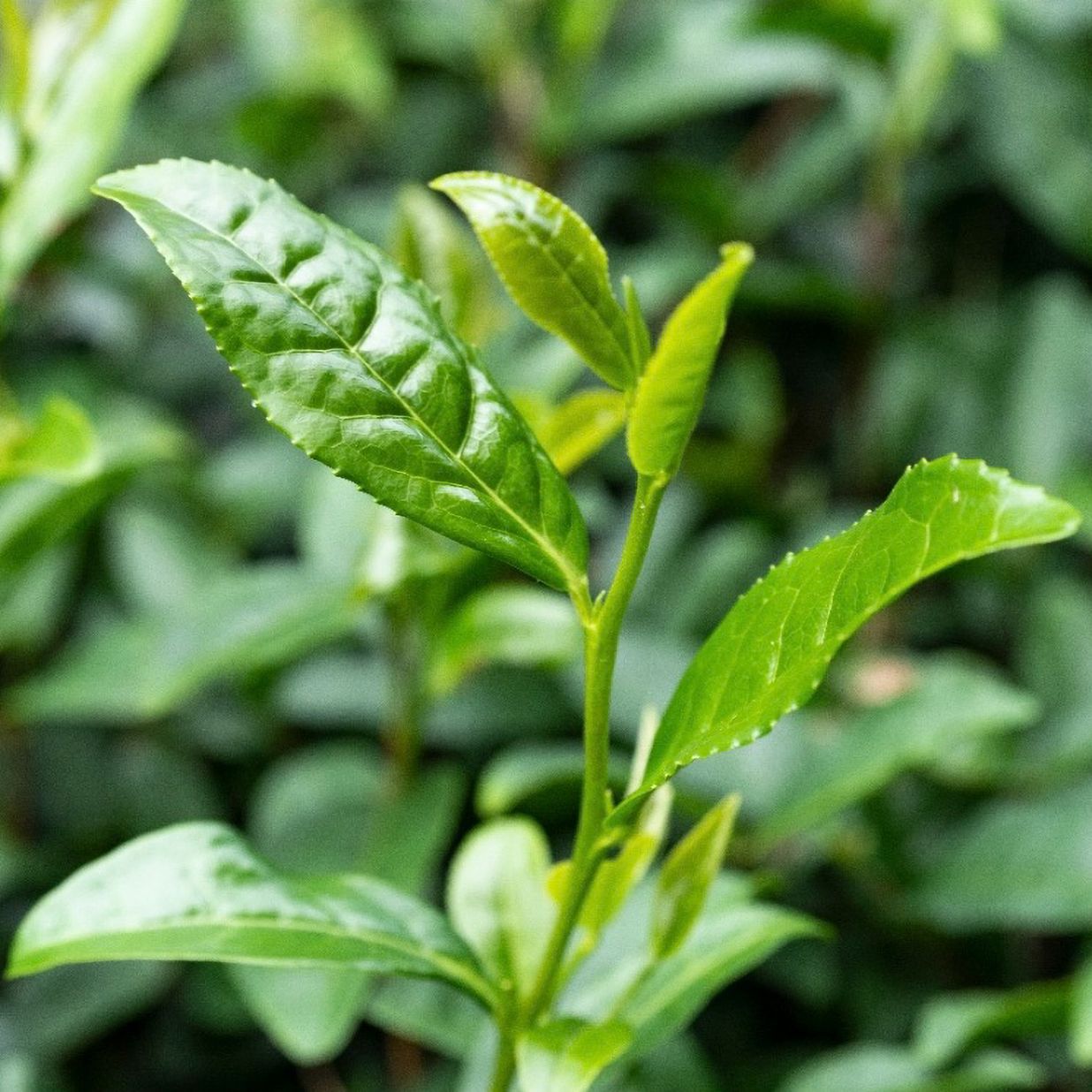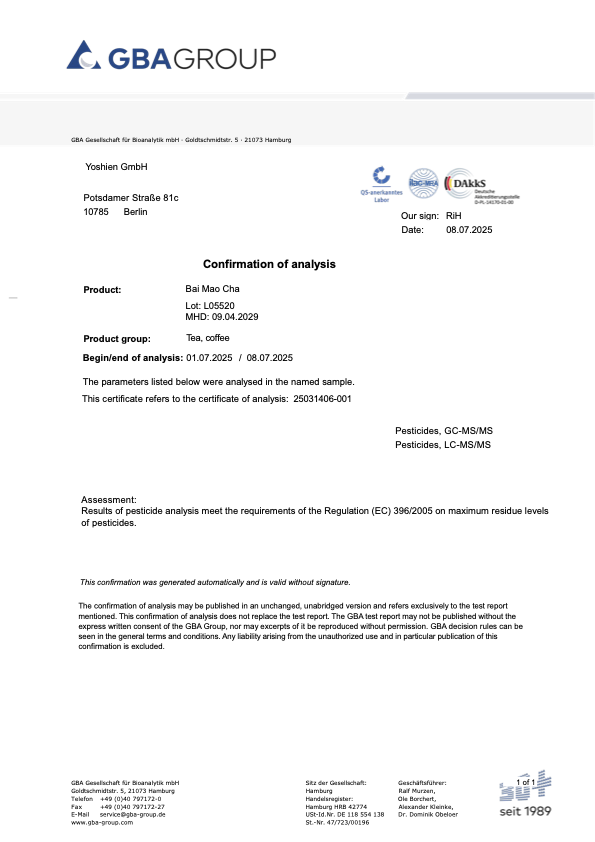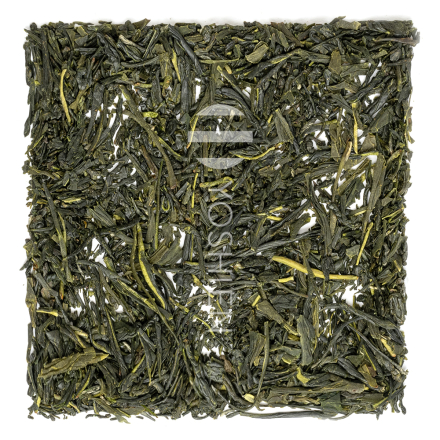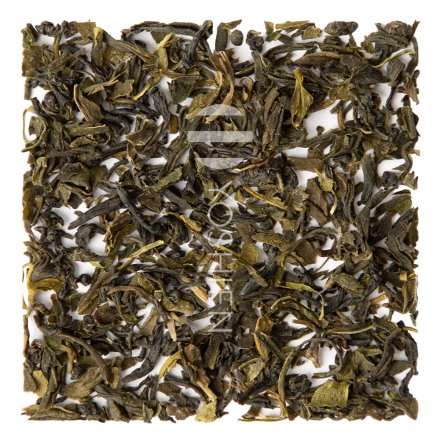Special features in location, cultivation and processing
Bai Mao Cha is a distinctive green tea that does not originate from the commonly cultivated tea plant varieties Camellia sinensis var. sinensis or var. assamica, but rather from the rare and little-known variety pubilima.
The Chinese name “Bai Mao” – roughly translated as “White Hair” – refers to the fine, silvery-white down on the underside of the leaves, which develops during the plant’s growth phase and gives the tea its characteristic appearance.
The processing of Bai Mao Cha follows the traditional method of Chinese green tea production. Immediately after harvesting, the tea leaves are pan-roasted (“Sha Qing”) to halt enzymatic oxidation. This preserves the fresh, vegetal aromas and the green colour of the leaves. Despite this conventional processing, Bai Mao Cha stands out due to its unusually high levels of beneficial secondary plant compounds.
While Chinese green teas aren't typically known for being particularly rich in catechins, independent laboratory tests have confirmed exceptionally high concentrations of catechins (C), epicatechins (EC), and epicatechin gallate (ECG) in Bai Mao Cha. Most notably, it exhibits an above-average content of epigallocatechin gallate (EGCG), which is a catechin typically found in high concentrations in Japanese tea varieties such as Benifuuki. And in some respects, Bai Mao Cha even surpasses the values found in Benifuuki. These compounds are renowned for their antioxidant properties and have shown to have beneficial health effects in numerous studies. We were able to validate the findings of these foreign studies regarding the high catechin content of Bai Mao Cha through independent laboratory analyses commissioned in Germany.
Single Origin
The tea comes 100% from the above-mentioned tea field in Guangxi, China








